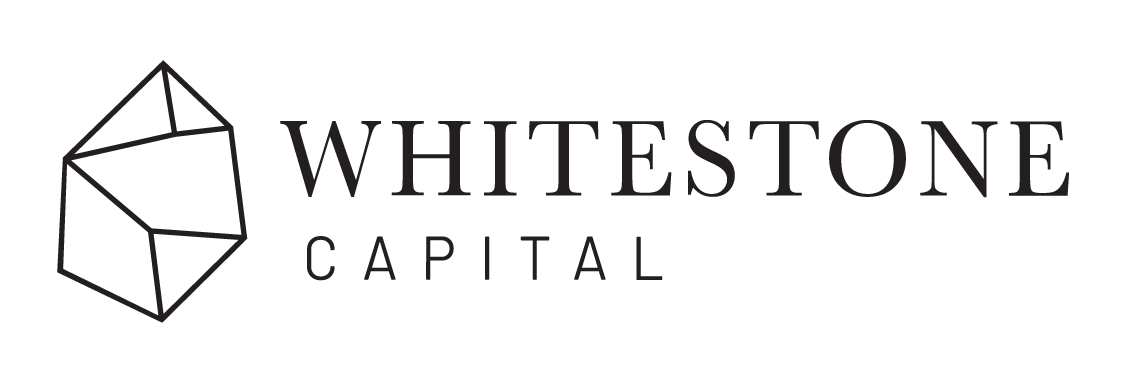Just a few years ago, international diversification in real estate was considered a luxury – a choice reserved for Family Offices with saturated domestic markets or Chief Investment Officers keen to showcase global ambitions.
An overseas office in New York, Singapore, Zurich, or London: a prestigious symbol that signaled status. Yet, many Family Offices rightly opted against it, as the ongoing costs – from staffing and rent to legal advisory fees – and the complexity often bore no relation to the actual benefits.
Today, alternatives exist: specialized partnerships or partial Family Offices that bundle expertise and access without the burden of a full overseas operation. At Whitestone Capital, we assert: global allocation is no longer optional – it is a mandate.
Not driven by curiosity or experimentation, but by necessity.
The question is no longer: “Why invest abroad?” Rather: “How do we structure access professionally, efficiently, and tax-optimally – and who will guide us with accountability?”
Let us examine the facts – with substance, clarity, and a perspective that looks beyond the horizon.

1. The Deceptive Comfort Zone: Germany, Austria, Switzerland
Germany is a nation of property owners. For decades, real estate has been the epitome of solid real value: reliable leases, calculated value growth, and a sense of security amid economic uncertainties.
Yet, the framework conditions have shifted fundamentally – and not to the advantage of Family Offices planning across generations.
Symbolic Politics and Legal Overreach
What was once seen as a stable, legally predictable framework is increasingly faltering. The rental policy in Germany – and in modified form in Austria and Switzerland – has radicalized in recent years.
It is no longer just about rent caps that limit rents in certain regions or upper limits that restrict rent increases. In Germany, the criminalization of so-called “rent gouging” has become reality: owners who exceed the local comparable rent – even when market demand justifies it – face suspicion and potential penalties.
Meanwhile, political movements and parties openly demand expropriations: the “Deutsche Wohnen & Co Enteignen” referendum in Berlin achieved 59.1% approval in 2021, marking a milestone despite ongoing legal disputes.

Now, a coalition of CDU and SPD is planning a nationalization law to be presented by the end of 2025, equipping the state with a toolbox ranging from price regulation to expropriations with compensation under Article 15 of the German Constitution (Tagesspiegel).
Such initiatives – regardless of their full implementation – send a clear signal: the investment climate is shifting from regulatory predictability to populist arbitrariness. For Family Offices reliant on long-term stability, this is toxic. Unlike institutional funds that can exit a fund cycle, they require calculable conditions spanning decades.
Energy Retrofit Obligations: Costs Driven by Law and Climate
Property owners face mounting pressure to modernize their assets energetically – far beyond standard maintenance costs. The Building Energy Act (GEG) introduces stricter standards:
- Since January 2024, newly installed heating systems in new buildings must rely on at least 65% renewable energy. For existing properties, this applies once municipalities submit heating plans – by mid-2026 in cities, at the latest mid-2028 in rural areas.
- Oil and gas heating systems may only operate after approximately 30 years with strict hybrid or renewable requirements – effectively phasing out fossil fuels.
- The CO₂ tax is rising: from 45 €/ton in January 2025 to an estimated 55 €/ton, with projections of 100–140 €/ton by 2030 under the EU Emissions Trading System (ETS2).
- Since 2023, heating costs for buildings with poor energy efficiency cannot be fully passed on to tenants, directly reducing returns and putting owners under pressure.
What does this mean for property owners?
- High Upfront Costs: Heat pumps, insulation measures, or hybrid solutions often cost five- to six-figure amounts per unit – an investment not every owner can shoulder.
- Ongoing Expenses: CO₂ levies and administrative burdens increase continuously, even with renewable systems.
- Economic Pressure: Modernization surcharges are capped at 0.50 €/m², delaying amortization over years.
- Risk Exposure: Unclear deadlines, shifting standards, and looming policy shifts turn long-term planning into a tightrope walk.
Energy is no longer a side issue for real estate – it has become a regulatory high-risk area with significant costs. Global allocation offers not just weatherproof diversification but access to markets where climate, CO₂ pricing, and energy standards are addressed early through market mechanisms and technology incentives.
Those banking solely on energy upgrades in the home market risk overextending themselves long-term.
Tax Burdens: Wealth in the Crosshairs
The political debate over tax increases poses substantial risks for long-term wealth holders. The wealth tax in Germany remains suspended but not abolished – with SPD and Greens actively pushing for its reinstatement.
Meanwhile, the concept of a burden-sharing levy, used post-World War II to tax property wealth, is resurfacing amid the financial aftermath of the Corona crisis. At the European level, regulation is intensifying: the planned establishment of a European wealth registry lays the groundwork for coordinated taxation of private assets – a move many Family Offices view as the start of cross-border wealth extraction.
These developments particularly affect property ownership: it is locally bound, publicly visible, and politically easy to target. In Austria and Switzerland, extensive rent control measures across wide market segments mean many properties, despite good locations, serve only as inflation protection – achieving a real return above inflation is increasingly a tightrope walk.
Conclusion: The supposedly safe home harbor is increasingly turning into a regulatory minefield – not just in Germany, but also in Austria and Switzerland. Global allocation has become an unavoidable strategy.

2. Macroeconomic Risks: Inflation, Currency, Interest Rates
A classic real estate deal in Germany with a 3.5% rental yield was viable when interest rates were at zero. But that scenario is history. The ECB raised the key interest rate to 4.5% between 2022 and 2023, significantly increasing financing costs.
Real returns are under pressure – and many Family Offices recognize that their portfolios are more tied to the Eurozone than they would prefer. Inflation erodes profits, currency risks grow, and interest rate structures become unpredictable.
Global Allocation as a Natural Hedge:
- Against Euro Depreciation: Investments in the US dollar zone provide protection against a weakening currency.
- Against German Saturation: US markets like the Sunbelt – Florida, Texas, the Carolinas – still offer attractive entry yields of 5–6%, driven by growing demand and rising rents.
- For a Stable Interest Rate Structure: The US responds more quickly to interest rate changes, with transparent financing models and fewer bureaucratic hurdles.
In Germany, yields above 4% are rare without costly retrofits or investments in risky locations unlikely to see rising demand. The US market, by contrast, offers cash flow potential hard to realize in the DACH region – for instance, through flexible rent pricing and robust demand dynamics observed in cities like Miami or Austin.

3. Demographics and Migration: Demand Does Not Emerge Everywhere Equally
Real estate investments are always a bet on future demand. And here lies the next strategic weakness of purely domestic portfolios: the demographic trend in Central Europe – especially outside urban centers – is declining.
- Declining Populations: Rural areas in Germany, Austria, and Switzerland lose residents, driven by migration to metropolitan areas.
- Aging Population: The population is aging rapidly, weakening housing demand in many regions.
- Vacancy Rates: Structurally weak areas struggle with unused properties, particularly in eastern German states or rural Alpine regions.
- Uncertain Growth: In some regions recently experiencing population growth – such as through refugees from Ukraine or other origins – the sustainability depends on global developments and potential shifts in immigration policy.
In contrast, regions like the US Sunbelt stand out:
- Significant Population Growth: Florida, Texas, Arizona, Georgia, and North Carolina see substantial increases through domestic migration, corporate relocations, and international inflows. Between 2020 and 2023, Florida’s population grew by 5.1% (U.S. Census Bureau).
- Younger Demographics: In the US, 1,000 more people reach adulthood daily than retire – a dynamic Europe can only dream of.
- Real Demand: Many of these markets see strong demand for affordable housing, supported by a rental sector where over 50% of households rent and institutional players are professionally established.
Those seeking trust must demonstrate substance – not make promises.
Family Offices investing globally do so not out of whim – but from data-driven realism. We focus on locations where people want and need to live, rather than on stagnating mid-sized towns in Central Europe.
4. Tax Advantages in the US Market
The US offers tax incentives rarely found in the DACH region, specifically tailored to Family Offices:
- Depreciation: Property owners can depreciate buildings over 27.5 years, significantly reducing tax liability (IRS).
- 1031 Exchange: Gains from property sales can be reinvested tax-free if channeled into like-kind properties – a mechanism facilitating long-term wealth building (IRS).
- Lower Tax Burden: Investors without additional US income benefit from exemptions or minimal tax rates, boosting net returns.

5. Regulatory Constraints: The Path to Global Markets
Many Family Offices we work with don’t approach us because they find the US exciting. They come because they can no longer progress in Germany, Austria, or Switzerland:
- Lack of Deals: Attractive properties are scarce, often overpriced or burdened with high retrofit costs.
- Regulatory Pressure: Rent controls, energy standards, and bureaucratic obstacles render investments unprofitable.
- Tax Burden: Rising levies – from CO₂ taxes to property taxes – diminish returns without matching yield increases.

Conclusion: Global Diversification Mitigates Risk and Secures the Future
Real estate remains a cornerstone of every Family Office portfolio. Yet, the playing field has changed – and those who think solely locally risk structural misallocation. The global economic order, monetary policy, and demographic trends demand new solutions.
Global allocation is not the elite choice – it is the new standard.
Markets like the US Sunbelt deliver cash flow, growth, and tax benefits absent in the DACH region. Family Offices diversifying globally today do more than reduce risk – they build wealth that endures across generations.
This is no hype. This is craftsmanship. We don’t buy what shines in the prospectus – but what delivers in the monthly report.
Contact us to strategically tap the US market – with clarity, accountability, and a long-term vision. Whitestone Capital – Investing with Substance.








